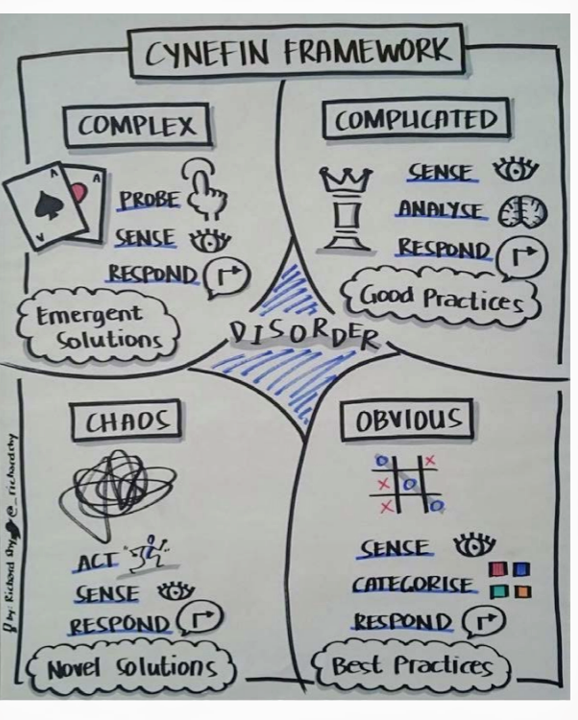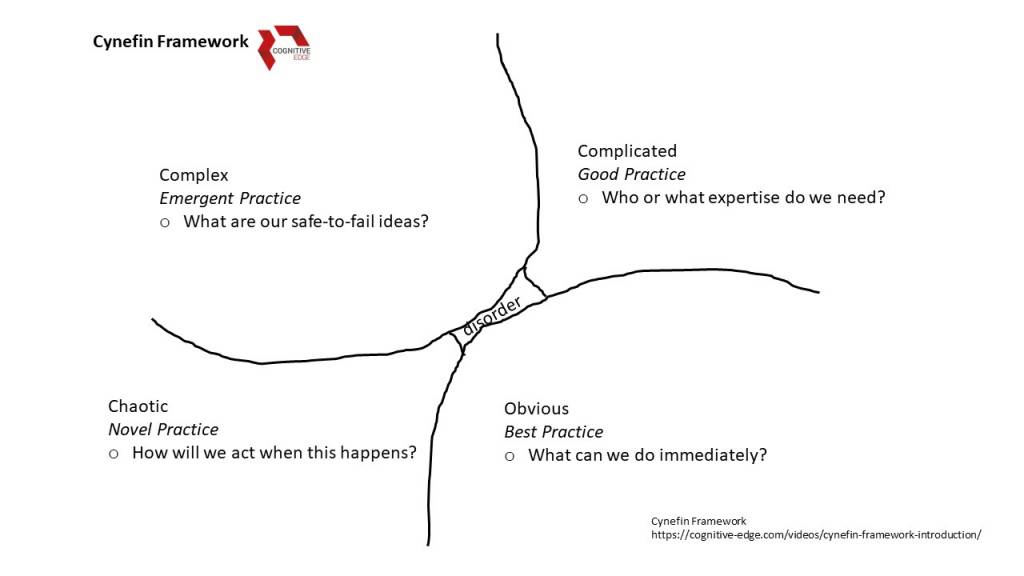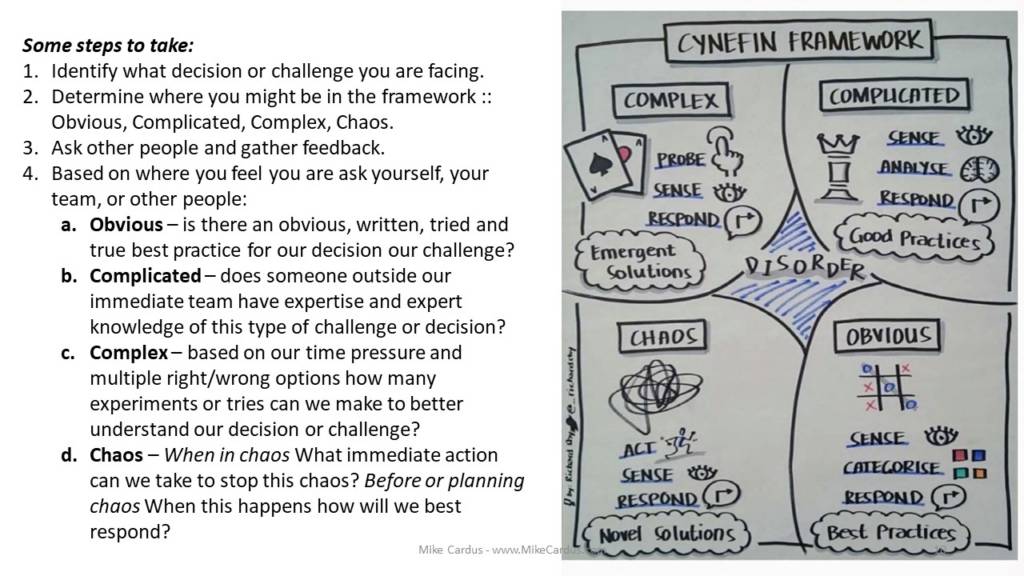This is an overly complex and chaotic environment. Suddenly we must eliminate all the plans, finances, work Key-Result-Areas, and capacity plans! EVERYTHING IS IN CHAOS, AND THIS IS COMPLEX!
Do you feel this way?
How do you lead and plan when everything changes and you have not experienced this change?
I’ve written before about my affection for the Cyenfin Framework and the work of Dave Snowden. And as we work together to make progress, I quickly put together a series of workshop slides you can use with your team to make sense of what is happening. Hopefully, you can determine which decisions and actions are best for the situation, your level of knowledge or expertise, and time-span to act.
Basics of Cynefin
First, an intelligent colleague Chris Corrigan wrote a great updated article about the cynefin framework and the updates recently. Below is my interpretation.
The framework has 5 domains, each supporting progress and using decision-making or leadership steps in the best or least harmful way.

Disorder – when you are unsure, uncertain, and confused, you are in a state of disorder. Disorder is the place you stand by yourself or with your team. This is where you make sense of what is happening, then determine which domain (Obvious, Complicated, Complex, Chaos) you may be standing.
Obvious Challenges – current best practices exist, and your team can find or ask others how to improve. The ambiguity is limited to the process data and understanding of the pieces that make the whole – optimizing the parts the whole will improve.
Complicated Challenges – there exist subject-matter-experts who have good practices, in-depth knowledge, and expertise in the control and how to affect these processes. Your team can meet with these experts, and the experts can provide some methods to improve, i.e., most IT implementations, SixSigma, Lean, or quality management. The current staff does not currently understand the ambiguity, and an outside expert helps share their steps and processes.
Complex Challenges – cause and effect are not obvious, and changes to one area will affect many other areas in unknown or unknowable ways. Your team and organization must look for patterns and attempt multiple safe-to-fail experiments to make sense of progress. The safe-to-fail experiments happen while seeking what is working to increase and not working to decrease.
Chaos Challenges – sudden, unexpected, unplanned shift happens internally or externally. No one expected or prepared. The potential damage to the organization, you, and your team is significant. Immediate action is needed. You must act, make sense of what you just did, and respond. In chaos, you want to get too complex as soon as possible.
How can I use this Cynefin thing?
Some steps to take:
- Identify what decision or challenge you are facing.
- Determine where you might be in the framework:: Obvious, Complicated, Complex, Chaos.
- Ask other people and gather feedback.
- Based on where you feel you are, ask yourself, your team, or other people:
- Obvious – is there an obvious, written, tried, and true best practice for our decision or challenge?
- Complicated – does someone outside our immediate team have the expertise and expert knowledge of this challenge or decision?
- Complex – based on our time pressure and multiple right/wrong options, how many experiments or tries can we make to understand our decision or challenge better?
- Chaos – When in chaos, What immediate action can we take to stop this chaos? Before or planning chaos When this happens, how will we best respond?

All challenges are not chaos or complex
When you feel overwhelmed, and your world is tilted, everything can feel chaotic and complex, and it is not.
You already have control over many things that are obvious and complicated. Listing those areas and treating them in an ordered way will help you feel some control and sustainability.
Also, recognizing other complex or chaotic challenges will move your team and you to approach those differently. From the difference, determine what can go wrong and what is working well to increase and not working so well to decrease.


